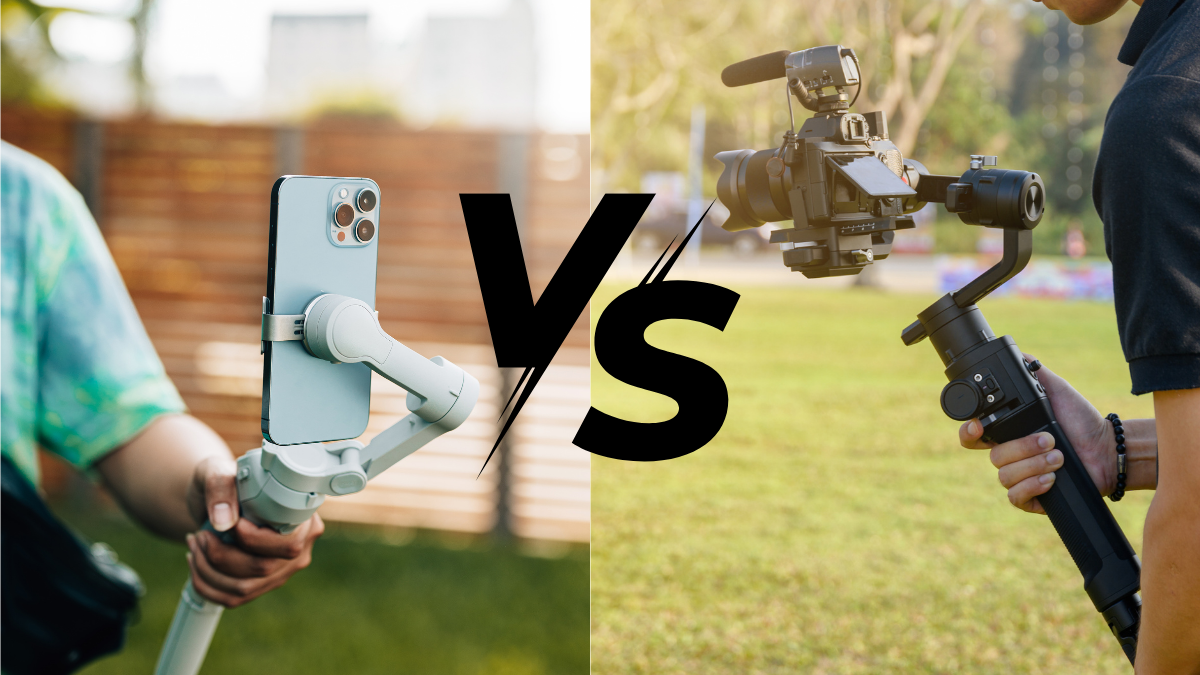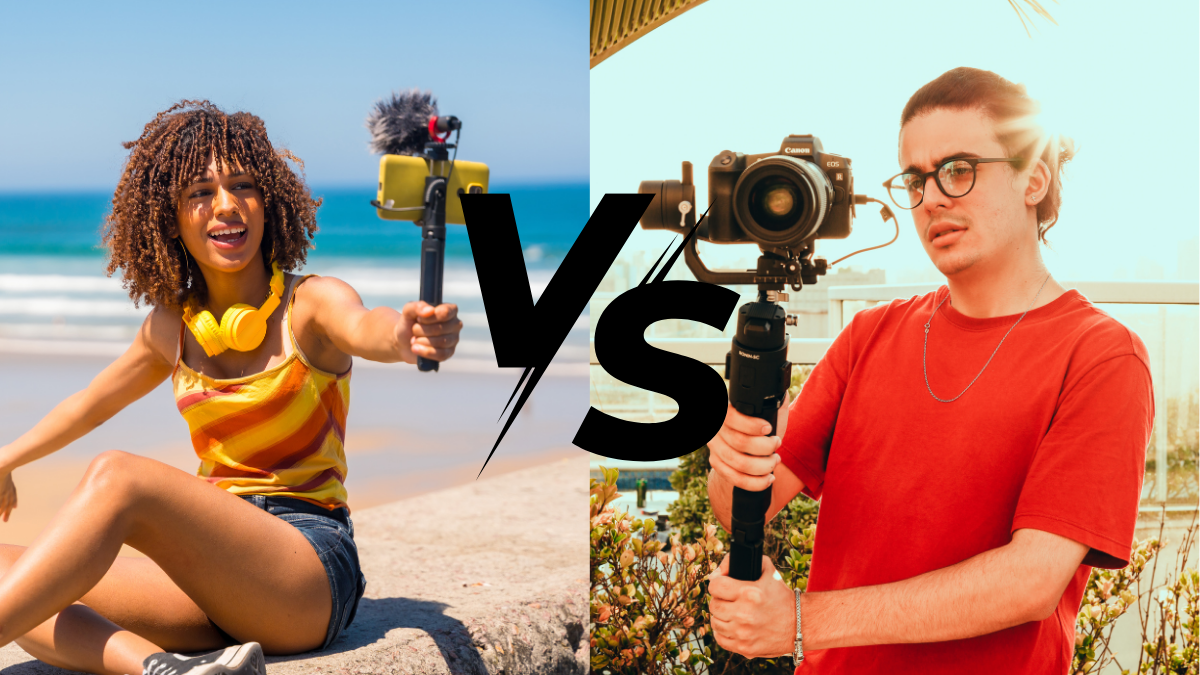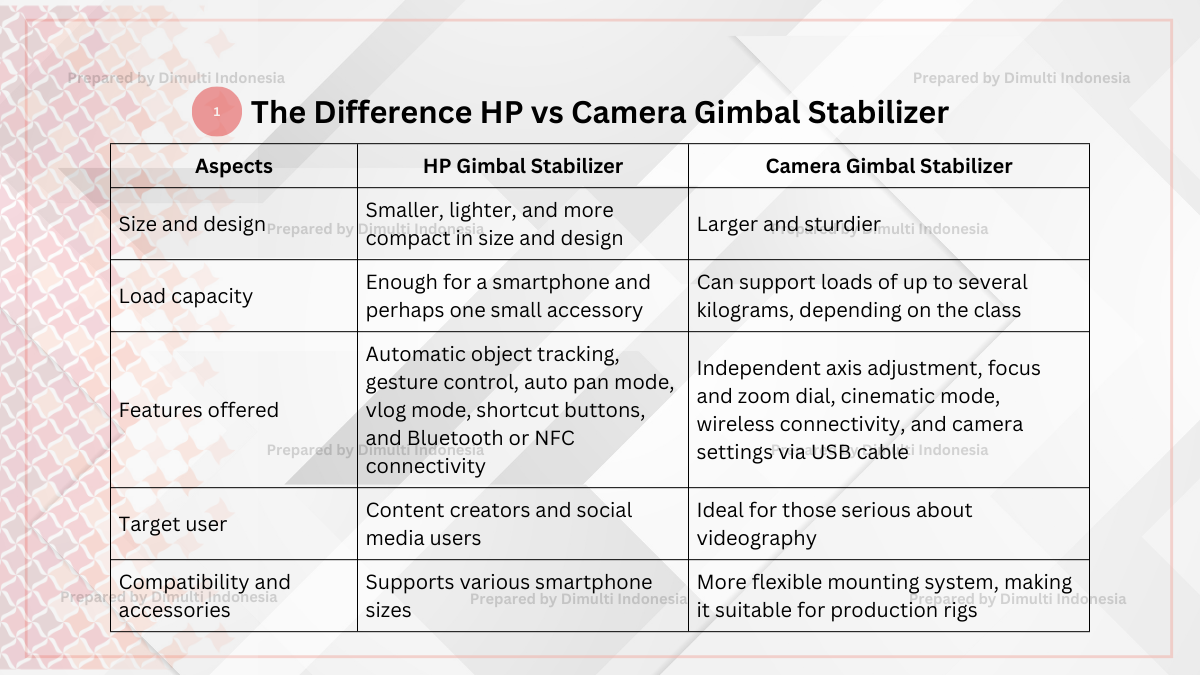Handphone (HP) and camera gimbal stabilizer are the keys to stability and balance the video result. Although both improve the video quality, HP vs camera gimbal stabilizer has some significant differences.
The differences between HP vs camera gimbal stabilizer include size, design, load capacity, features offered, target user, and compatibility.
This article will delve into the important differences between HP vs camera gimbal stabilizers to improve the video quality.
What is a HP Gimbal Stabilizer?

A gimbal stabilizer is a device used to balance a cell phone. This tool helps you maintain image stability when recording videos with a lot of movement. This tool also makes it easier for you to create content that focuses on the subject without being distracted by hand movements.
That way, you will have videos with a more professional visual quality. This will certainly be useful for those of you who want to make professional-quality videos from your smartphone.
What is a Camera Gimbal Stabilizer?

A gimbal stabilizer is a device used to balance a camera. This tool helps you maintain image stability when recording videos with a lot of movement. The technology that complements this tool is motion detection and correction, vibration elimination, and real-time shock compensation.
This way, you will get stable, high-quality images without the need for complicated manual balancing. Don't be surprised if the quality is like that of a professional video.
The Differences of HP vs Camera Gimbal Stabilizer

An HP and a camera gimbal stabilizer are both key to stability and balance the video result. Here are five differences between HP vs camera gimbal stabilizer:
1. Size and design
HP gimbal stabilizer: Smaller, lighter, and more compact in size and design.
Camera gimbal stabilizer: Larger and sturdier in size to support DSLR or mirrorless cameras.
2. Load capacity
HP gimbal stabilizer: Usually only capable of supporting a weight of around 200-300 grams, enough for a smartphone and perhaps one small accessory such as a clip-on mic.
Camera gimbal stabilizer: Can support loads of up to several kilograms, depending on the class. Allows for additional equipment such as a small monitor or external microphone.
3. Features offered
HP gimbal stabilizer: Automatic object tracking, gesture control, auto pan mode, vlog mode, shortcut buttons, and Bluetooth or NFC connectivity.
Camera gimbal stabilizer: Independent axis adjustment, focus and zoom dial, cinematic mode, wireless connectivity, and camera settings via USB cable.
4. Target user
HP Gimbal Stabiliser: Content creators and social media users.
Camera gimbal stabiliser: ideal for those serious about videography or who often take photos for clients or investment purposes.
5. Compatibility and accessories
HP gimbal stabilizer: Supports various smartphone sizes and comes with a fairly intuitive app.
Camera gimbal stabiliser: It has a more flexible mounting system, making it suitable for production rigs. You can also add other accessories such as a focus motor, cage, or small light panel.
That’s the difference between HP vs camera gimbal stabilizer that you can consider when choosing according to your personal needs.
If you're looking for something compact and easy to use for creating content, a smartphone gimbal stabilizer is a good choice. However, if you're a professional videographer, you can choose a camera gimbal stabilizer.